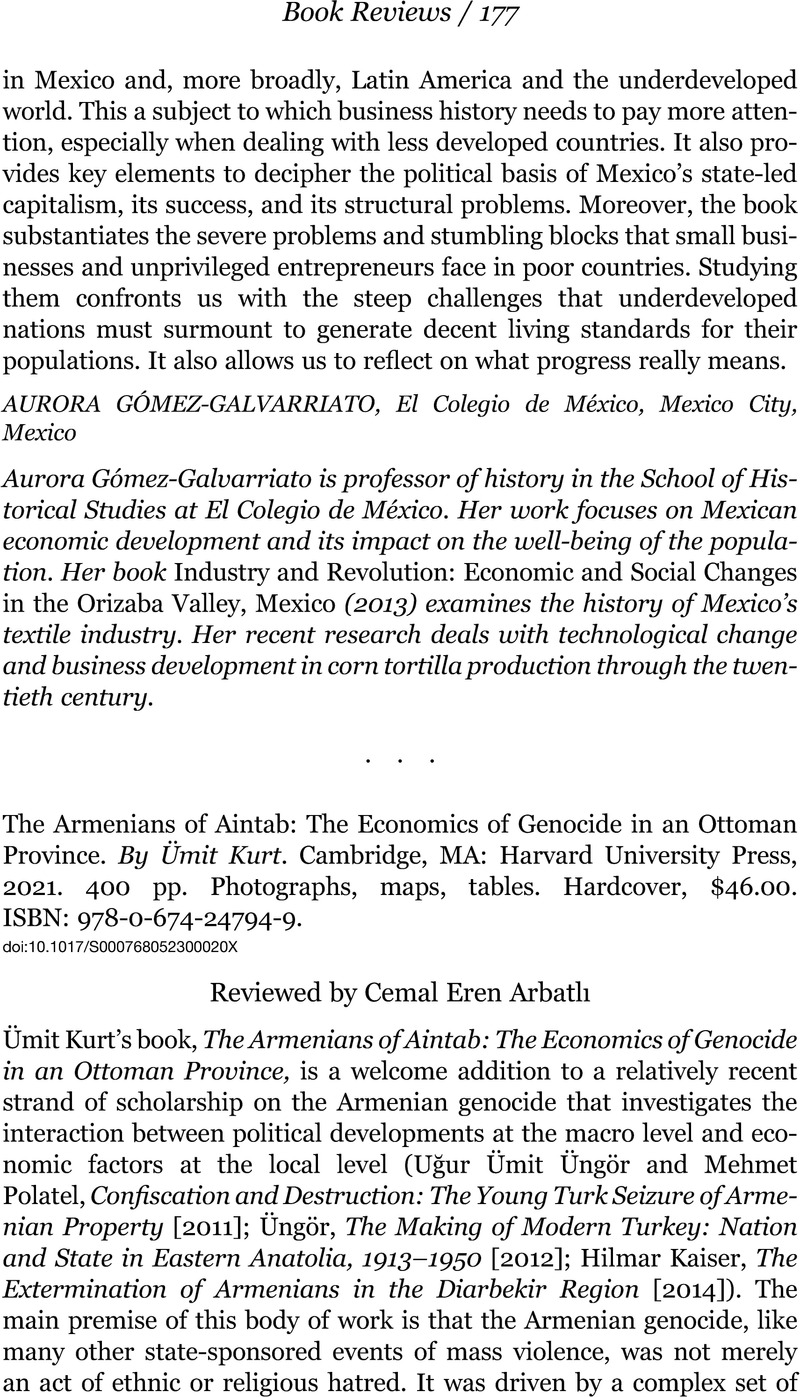No CrossRef data available.
Article contents
The Armenians of Aintab: The Economics of Genocide in an Ottoman Province. By Ümit Kurt. Cambridge, MA: Harvard University Press, 2021. 400 pp. Photographs, maps, tables. Hardcover, $46.00. ISBN: 978-0-674-24794-9.
Review products
The Armenians of Aintab: The Economics of Genocide in an Ottoman Province. By Ümit Kurt. Cambridge, MA: Harvard University Press, 2021. 400 pp. Photographs, maps, tables. Hardcover, $46.00. ISBN: 978-0-674-24794-9.
Published online by Cambridge University Press: 10 May 2023
Abstract
An abstract is not available for this content so a preview has been provided. Please use the Get access link above for information on how to access this content.

- Type
- Book Review
- Information
- Copyright
- Copyright © 2023 The President and Fellows of Harvard College


